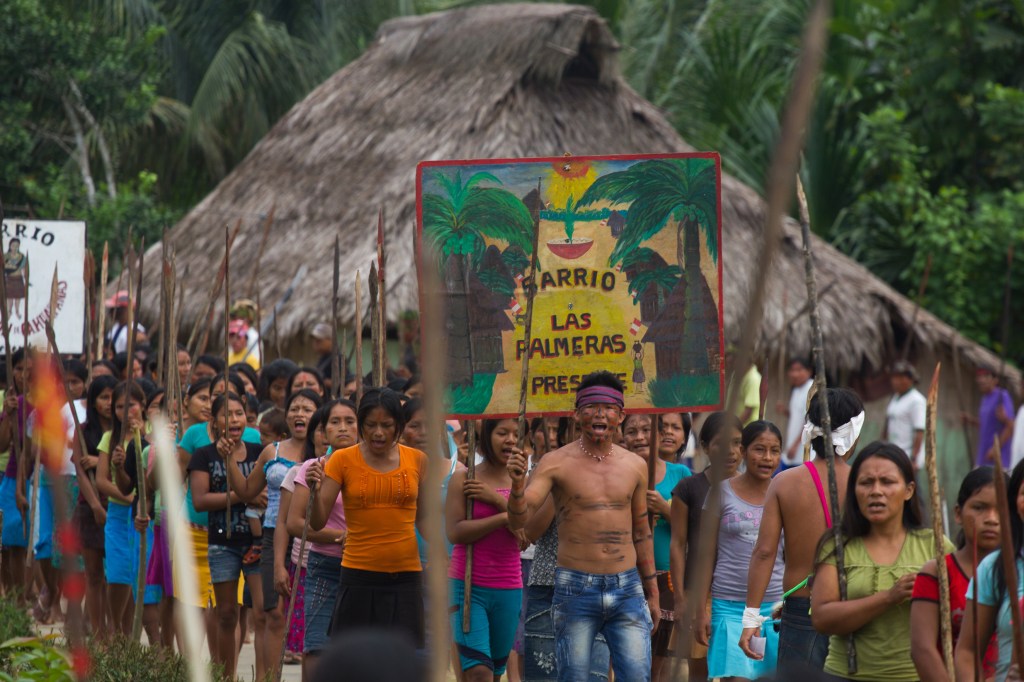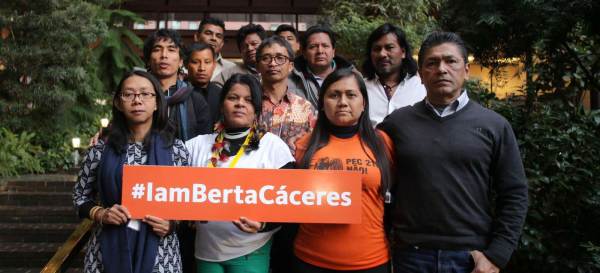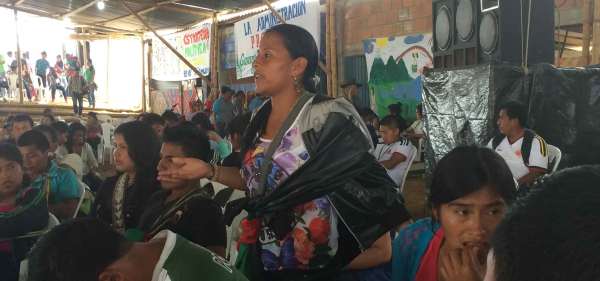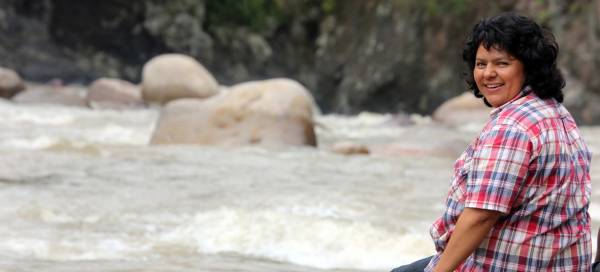
In 2008, the Peruvian government approved laws facilitating oil drilling and logging in the Amazon. These laws posed a major threat to the environment, as well as to the rights of indigenous peoples who relied on the forest and rivers. Months of protests followed, and indigenous peoples blocked highways as they demanded the laws be repealed. On June 5, 2009, President Alan García declared a state of emergency and sent troops to clear the highways, unleashing mayhem. Twenty-three police officers and 10 civilians were killed, and countless others were injured. The ensuing crisis led Prime Minister Yehude Simon to resign and the Peruvian Congress to finally repeal the objectionable laws.
Five years later, the government pressed criminal charges against 52 indigenous leaders for the events of June 5, known popularly as the Baguazo. The leaders were charged with numerous counts of murder, subversion, rioting, and blocking access, among other crimes. Seven faced life imprisonment. All of them proclaimed their innocence and claimed the government was using them as scapegoats for the tragic violence. For the past 28 months, they have traveled constantly from remote rural areas to the court in Bagua for legal proceedings, and have endured great hardships to pay their legal expenses.
When Two Worlds Collide—a documentary eight years in the making by first-time filmmakers Heidi Brandenburg and Matthew Orzel, produced with Ford’s support—captures this conflict between indigenous communities determined to protect their tribal lands, and government-supported business interests eager to open those lands up to oil drilling, mining, and clear-cutting. “The film makes its case powerfully,” wrote critic Dennis Harvey in Variety, noting its resonance with “myriad parallel situations in which private commercial interests continue to trump environmental ones worldwide.” When Two Worlds Collide premiered at the Sundance Film Festival earlier this year and has won critical acclaim and widespread coverage. It is set to premiere in Australia, India, Norway, Sweden, and Switzerland.
Today, the film opens in Peru—where its dramatic narrative is set, and where it will undoubtedly rekindle national debate about the lessons from the Baguazo.
Accessibility Statement
- All videos produced by the Ford Foundation since 2020 include captions and downloadable transcripts. For videos where visuals require additional understanding, we offer audio-described versions.
- We are continuing to make videos produced prior to 2020 accessible.
- Videos from third-party sources (those not produced by the Ford Foundation) may not have captions, accessible transcripts, or audio descriptions.
- To improve accessibility beyond our site, we’ve created a free video accessibility WordPress plug-in.
The film’s national premiere in Peru comes at a fitting time in the story of the case it documents. On September 22, the three presiding judges unanimously found the defendants not guilty of all charges, noting that all those who died were killed by bullets, and the indigenous defendants were not carrying guns. The judges ruled that calling for and participating in demonstrations was not subversive—it was an exercise of the right to free expression. They noted that Peruvian law respects legal pluralism and indigenous peoples’ traditional legal systems. Based on extensive anthropological testimony, the judges’ ruling explains in depth why the indigenous demonstrators behaved as they did. They even said that the demonstrators had a right to block highways because they did so in an effort to defend a healthy environment—a “higher purpose,” the judges said, than ensuring that commercial trucks could pass through on time.
Partly as a result of the Baguazo events, in 2011 the Peruvian Congress passed a law recognizing indigenous peoples’ right to free prior and informed consent, in relation to policies and investments that affect their territories. Yet despite the law, indigenous peoples and forests in the Peruvian Amazon continue to face threats from oil companies, oil palm plantations, loggers, gold miners, and others. And these communities continue to struggle to get the national government to provide them with land titles for all their territories, which would provide them with important legal protection.
As indigenous communities continue to fight for their rights, When Two Worlds Collide offers a powerful depiction of their struggle—one that challenges viewers to face the damage wrought by inequality and recognize what’s possible when people come together peacefully to confront it.



